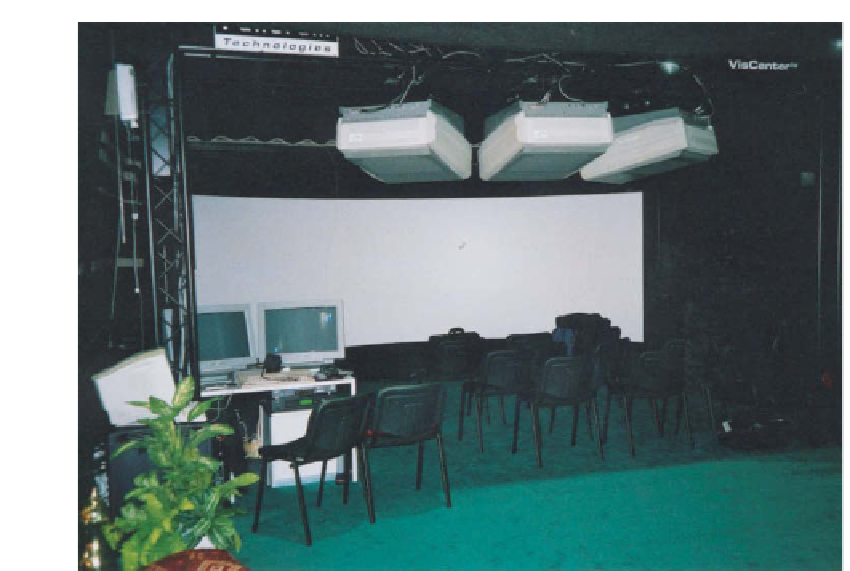Geoscience Reference
In-Depth Information
Fig. 7.9
Cinema-style set-up of a visualisation centre. Cinema-style rooms with large screens and
enough space for teams to view data together have made a large impact on sharing ideas across
disciplines.
reflectivity will help in deciding semi-quantitatively what range of voxel amplitudes
represents the 3-D body we are interested in.
An advantage of loading the entire 3-D volume is that one can rapidly scan through
the complete dataset and view it from any angle.
Figure 7.6
shows a display where the
data are viewed from above; weak amplitudes have been rendered transparent to make
a map view of the reservoir distribution. Techniques such as these have dramatically
reduced the time it takes to perform a first-pass interpretation of new exploration areas
and have also increased understanding of existing fields.
An advance that is still experimental rather than common practice is the ability to
project the data on to a flat screen so that it appears to the viewer as though he is looking
at a real 3-D image. The technology is very similar to that used for some films that are
viewed in 3-D. The image is displayed as a stereo pair with rapid alternation between
the left-eye and right-eye pictures. The viewer wears special glasses that incorporate
an electronic shutter so that the left side is transparent when the left-eye picture is on
the screen, and the right side for the right-eye picture. Thus the left eye sees only the
left-eye picture, and the right eye the right one. In this way, the 3-D perspective is
re-created
(fig. 7.7)
. An even more experimental technology is one where the data are
projected on the walls and floor of specially built 'visionariums'. These display the data

